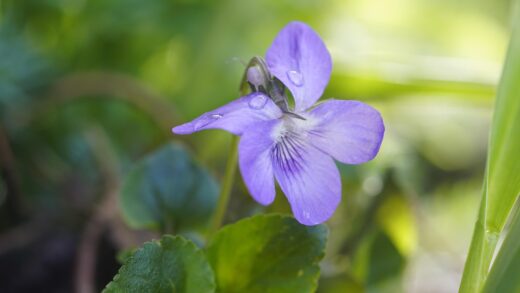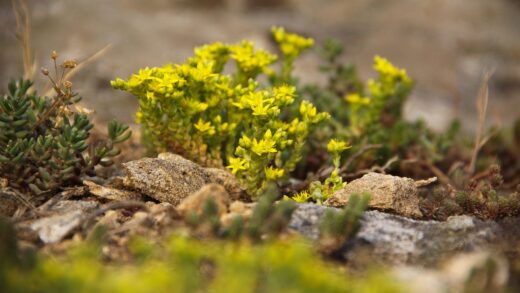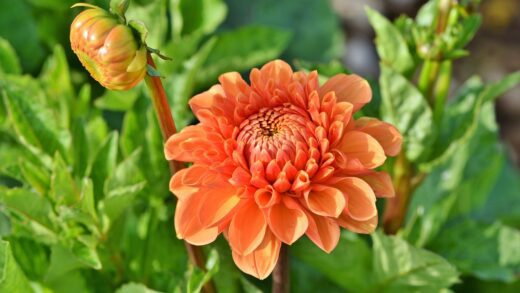Successfully establishing French lavender in your garden begins long before the plant even touches the soil; it starts with meticulous planning regarding location and timing. This particular species of lavender, with its flamboyant “bunny ear” bracts, is less forgiving than its English counterpart, demanding specific conditions to truly thrive. Choosing a site that offers at least six to eight hours of direct sunlight is non-negotiable, as is providing soil with impeccable drainage. The ideal time for planting is in the spring, after the last frost has passed, which allows the plant the entire growing season to develop a robust root system before facing the challenges of its first winter.
The process of planting itself is a critical step that can determine the future health of your lavender. It is not enough to simply dig a hole; you must create a welcoming environment for the roots. This involves digging a hole that is significantly wider than the plant’s root ball to allow the roots to spread out easily into the surrounding soil. Amending the backfill soil with sand or fine grit is also a crucial step, especially in clay-heavy gardens, to ensure that water never stagnates around the plant’s sensitive crown and root system.
Propagation offers a rewarding and cost-effective way to increase your stock of French lavender, with softwood cuttings being the most reliable method. This technique involves taking cuttings from the new, non-flowering growth of a healthy parent plant during the late spring or early summer. When provided with the right conditions—a sterile rooting medium, consistent moisture, and warmth—these cuttings will readily develop roots, creating new plants that are genetically identical to the original. This method is far more predictable and faster than attempting to grow French lavender from seed.
Whether you are planting a nursery-grown specimen or a self-propagated one, the principles of aftercare remain the same. Consistent but careful watering during the first few months is vital for establishment, yet you must be vigilant against overwatering, which is the most common reason for failure. By understanding and respecting the specific needs of French lavender from the very beginning, you set the stage for a long-lasting and floriferous addition to your garden that will provide sensory delight for years.
Choosing the right time and place to plant
Timing is a crucial element when planting French lavender to ensure its successful establishment. The optimal window for planting is in the spring, once the threat of frost has completely subsided and the soil has had a chance to warm up. This allows the plant to dedicate its energy to root development throughout the spring and summer, building the strength needed to endure the following winter. Planting too early in the spring risks exposing the tender new plant to a late frost, while planting too late in the summer may not give it enough time to establish a sufficient root system before the cold weather arrives.
The selection of the planting site is arguably the most critical decision you will make for your French lavender. This plant is native to the sun-drenched, rocky hills of the Mediterranean and demands a location that replicates these conditions as closely as possible. This means selecting the sunniest spot in your garden, one that receives a minimum of six, and preferably eight or more, hours of direct, unfiltered sunlight each day. A south-facing slope or a location next to a heat-reflecting wall can be an excellent choice.
Beyond sunlight, the chosen location must have outstanding drainage. French lavender has a deep intolerance for waterlogged soil, which leads to fatal root rot. To assess a potential site, observe it after a heavy rain; if water pools or the ground remains soggy for hours, it is not a suitable location. In such cases, you will need to either create a raised bed or a mound to plant on, or choose to grow your lavender in a container where you have complete control over the soil composition and drainage.
Finally, consider the plant’s mature size and the need for good air circulation when selecting a spot. French lavender can grow into a substantial mound, so allow adequate space between it and other plants to prevent overcrowding. Good air movement around the foliage is essential for drying off moisture from rain and dew, which helps to ward off fungal diseases. Proper spacing not only contributes to the health of the plant but also allows its beautiful form to be fully appreciated.
The step-by-step planting process
Once you have selected the perfect time and location, the physical act of planting requires careful attention to detail. Begin by digging a planting hole that is twice as wide and just as deep as the container the lavender came in. This extra width is important because it loosens the surrounding soil, making it easier for the plant’s roots to penetrate and expand outward. Roughen up the sides of the hole with your shovel to prevent the roots from being confined within a smooth, compacted space.
Before placing the plant in the hole, you must address the soil that will be used to backfill it. French lavender thrives in lean, slightly alkaline soil, so this is your opportunity to amend your native soil if necessary. For heavy clay soils, mix the excavated soil with a generous amount of horticultural sand, fine gravel, or perlite to improve its porosity. Avoid adding rich compost or manure, as overly fertile soil can lead to lush foliage at the expense of flowers and can make the plant less hardy.
Carefully remove the lavender from its nursery pot, being gentle with the root ball. If the roots are tightly coiled or pot-bound, gently tease them apart with your fingers to encourage them to grow outwards into the new soil. Place the plant in the center of the hole, ensuring that the top of the root ball is level with or even slightly above the surrounding ground level. Planting too deep can cause the crown of the plant to rot, so it is always better to err on the side of planting it a little high.
After positioning the plant, backfill the hole with the amended soil, firming it gently around the root ball to eliminate any large air pockets. Water the plant thoroughly immediately after planting to help settle the soil and provide essential moisture to the roots. For the first few weeks, monitor the soil moisture carefully, watering deeply whenever the top few inches of soil become dry. This initial care is crucial for helping the plant overcome transplant shock and begin its new life in your garden.
Propagation from cuttings: a reliable method
Propagating French lavender from softwood cuttings is an exceptionally effective way to create new plants that are exact clones of the parent. The best time to take these cuttings is in late spring or early summer when the plant is actively growing but before the stems have become too woody. Look for healthy, vigorous stems that have not yet formed flower buds, as these will direct their energy into root production rather than blooming. Using a sharp, sterile pair of pruning shears, take a cutting that is about three to four inches long, making the cut just below a leaf node.
Once you have your cuttings, prepare them for rooting by carefully stripping the leaves from the lower half of the stem. This is important because any leaves left below the soil level would rot and could introduce disease. After stripping the leaves, you may choose to dip the cut end of the stem into a rooting hormone powder. While not strictly necessary for lavender, which roots fairly easily, using a rooting hormone can increase the success rate and speed up the development of roots.
The rooting medium should be a light, sterile mix that provides good aeration and drainage. A mixture of equal parts perlite and peat moss or a pre-made seed starting mix works very well. Fill small pots or a seed tray with this medium, and then use a pencil or a dibber to create a hole for each cutting. Insert the prepared cuttings into the holes, ensuring that the stripped portion of the stem is fully buried, and then gently firm the medium around them.
To create the humid environment that encourages rooting, water the cuttings lightly and cover the pot or tray with a clear plastic bag or a propagation dome. Place the cuttings in a warm location that receives bright, indirect light, as direct sunlight can scorch them. Check the cuttings every few days to ensure the medium remains moist but not waterlogged, and to air them out to prevent fungal growth. Roots should begin to form within three to six weeks, at which point you can gently tug on a cutting to feel for resistance, indicating successful rooting.
Growing french lavender from seed
While propagating French lavender from cuttings is more common and reliable, growing it from seed can be a rewarding, albeit more challenging, experience. Lavender seeds have a reputation for being slow and erratic to germinate, often requiring specific conditions to break their dormancy. To improve your chances of success, a period of cold stratification is highly recommended. This process mimics the natural winter conditions that the seeds would experience outdoors, and you can achieve it by mixing the seeds with some damp sand or vermiculite, placing them in a sealed plastic bag, and refrigerating them for three to four weeks before sowing.
After the cold stratification period, you can sow the seeds indoors in a seed tray or small pots filled with a sterile, well-draining seed starting mix. Sow the seeds thinly on the surface of the mix and cover them with a very light dusting of vermiculite or fine sand, as they need some light to germinate. Moisten the medium gently using a spray bottle to avoid dislodging the seeds. To maintain the necessary humidity and warmth for germination, cover the tray with a clear plastic lid or plastic wrap and place it in a warm location or on a heat mat set to around 21°C (70°F).
Patience is key when waiting for French lavender seeds to germinate, as it can take anywhere from two weeks to over a month. During this time, it is crucial to keep the growing medium consistently moist but not saturated, and to provide adequate air circulation by briefly removing the cover each day. Once the seedlings emerge and have developed their first set of true leaves, you can remove the cover completely and move them to a location with bright, indirect light.
As the seedlings grow stronger, you will need to thin them out to prevent overcrowding, selecting the most robust-looking ones to continue growing. Once they are a few inches tall and have several sets of leaves, they can be carefully transplanted into individual pots. It is important to continue growing them in a protected environment, gradually hardening them off by exposing them to outdoor conditions for increasing periods over a week or two before finally planting them in their permanent garden location after all danger of frost has passed.
Transplanting and repotting established plants
There may come a time when you need to move an established French lavender plant to a new location or repot a container-grown specimen. The best time to undertake this task is in the early spring, just as new growth is beginning to emerge. This timing allows the plant to utilize the entire growing season to re-establish its root system in the new environment. Avoid transplanting during the heat of summer, as this can cause excessive stress and potentially kill the plant.
When transplanting a plant from one garden spot to another, proper preparation is essential to minimize shock. The day before you plan to move it, water the plant thoroughly to ensure the roots and surrounding soil are well-hydrated. When digging up the plant, aim to preserve as much of the root ball as possible. Start digging a wide circle around the plant, well away from the base, and go down deep enough to get under the main root system before carefully lifting it from the ground.
For repotting container-grown lavender that has become root-bound, choose a new pot that is only one or two inches larger in diameter than the current one. Moving to a pot that is too large can lead to the soil staying wet for too long, which increases the risk of root rot. Gently remove the plant from its old pot, inspect the roots, and trim away any that are dead or circling. Fill the new pot with a fresh, well-draining potting mix, position the plant at the same depth it was previously growing, and fill in around it with the new mix.
After transplanting or repotting, the aftercare is crucial for a successful recovery. Water the plant well to settle the soil around the roots, but then allow the soil to dry out moderately before watering again. The plant may show some signs of wilting or transplant shock for the first week or two, which is normal. You can help it recover by providing some temporary shade from the intense afternoon sun and by avoiding fertilization until you see clear signs of new growth, indicating that the root system is beginning to function in its new home.




















